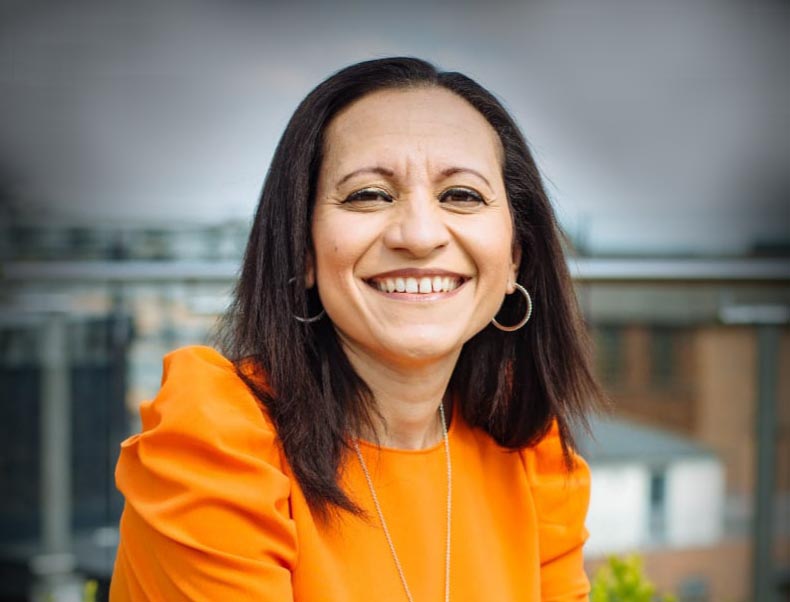Universities Need To Use The Pandemic To Solve The Diversity Problem

A few months ago, the University of Oxford (@UniofOxford) announced it had almost doubled the proportion of students from disadvantaged backgrounds starting their studies, as part of a five-year turnaround resulting in its most diverse ever intake.
This came after widespread criticism from MPs and the media that the university was not doing enough to attract a wider range of students.
A good effort from one of the UK’s most prestigious universities. Against the figure of how ethnically diverse Oxford University is, however, a different story is told. Only 23.6% of those admitted to Oxford are Black and Minority Ethnic (BAME) students, showing that their efforts need not slow down any time soon.
This is, unfortunately, the case when looking at the wider higher education statistics. Only 13.3% of undergraduate entrants in 2019-20 were from an Asian background, 9.7% were black, 4.8% were from a mixed ethnic background, and 2.2% were from other minority ethnic groups. This means that ethnic minorities that were qualifiers in 2019-2020 made up around 25% of higher education students.
Time and time again we read headlines outlining the cry for more help when it comes to diversity. Businesses need to do more, universities need to do more, the government needs to do more; yet, the struggle remains.
We are told that diversity is vital, a statement that is glaringly obvious and true. It is hugely beneficial when businesses, companies, schools and laboratories are representative of the people in society. It impacts the research conducted, pushes innovation to a new level and allows for better collaboration.
So why are universities so bad at being diverse?
The pandemic pushed universities to offer education outside of the box – to assist students in an entirely new way. Now is the perfect time to look at the benefits remote learning has taught us, with flexibility being the main key behind it all.
Universities need to loosen up
Universities need to stop getting stuck on the idea that students need to fit a certain criterion, from age brackets to social class and previously gained grades.
From the social side of university, the structure of courses and the entry requirements, higher education insitutes have very little chance of being truly diverse if they don’t loosen up its structure. There will always be some courses (the medical sector, for example) that will need strong evidence that students are prepared for the intensity of a degree. But for a wide selection of sectors, this need not be measured by grades. It can be measured by previous experience attained, for example.
Scholarships are a great means of getting people with different skills and backgrounds into higher education. But the main medium of assessing their entry? An essay. To open up courses to the array of expertise and intelligence among us, universities need to make sure their ways of assessing truly captures the different skills many possess. This can be done with more practical assessments.
Flexiblity isn’t just a buzzword for employers
The disparity has been widened in the education sector with people learning remotely. It is harder to spot those who are struggling, those who are working outside of learning, who have wider commitments and those who don’t have the same access to devices – such as computers and laptops. This is why flexibility is so important.
With some students often having other commitments, (a day job, caring for a family member, or looking after children – to name a few), allowing them to fit their higher education journey around their life is appealing. It doesn’t mean they have to pull their hair to make ends meet.
Offering evening classes is a good start. Allowing flexibility is even better. Giving students the option to pause their education journey, without having to wait until the start of the new year to resume, is the ideal universities should be moving towards. We need to realise that sometimes life just gets in the way.
Welcome people from all paths
At Arden University’s Faculty of Business, 64% of the students are from BAME backgrounds and many of them are mature students (21 years and older). Older students are more likely to be from underrepresented or disadvantaged groups. Research by million+ and NUS shows that mature students are more likely to be black, Asian or minority ethnic, have known disabilities, and have non-traditional qualifications than younger students.
This is usually because those from disadvantaged backgrounds may focus on other commitments, need to care for their family (sometimes financially) and therefore skip higher education, or are first generation students and have less support and guidance to continue their education. It is not until later they have the time, experience, money and understanding to consider working towards a degree.
So, to fix the diversity disparity, universities ought to do more to attract mature students. At Arden University, 89% of students are mature students and so we are constantly thinking of new ways to fit education around their lifestyle. Thinking of grants and scholarships are all in good taste, but they will never be enough to fix the problem higher education has with diversity. Flexibility and a willingness to be less rigid with traditional forms of assessment and applications, as aforementioned, are good ways to begin.
Students – regardless of their age – will also be at different stages in their ability for education skills, such as digital literacy skills and research skills. Offering courses to help students be comfortable with the basic skills they need in order to complete their educational journey. This will make sure all students, regardless of when they decide to venture into higher education, will be equipped with the same core skills they need throughout their education and career.
It is important to address that attracting more mature students is not the only key behind diversity. The issues lie much deeper than that and often starts from the top down. Of academic staff with known ethnicity, 18% BAME in 2019/20. This has increased by only one percentage point year on year since 2016/17. Of the 21,055 professors with known ethnicity, only 11% or 2,285 were BAME. Many ethnic minority academics also report feeling untrusted and overly scrutinised by colleagues and managers, and overlooked when it comes to promotion.
Universities aren’t doing enough to listen to the lived experiences of BAME staff and students, leaving their strategies to be a ‘one size fits all’ approach where in fact it should be tailored to the individual institution and its culture. What might be suitable for a university with a lack of diversity may not be fitting for a large amount of BAME student population – there needs to be an overhaul in how universities appeal to students and how they structure their curriculum.
Dilshad Sheikh, Dean of the Faculty of Business at Arden University
Dilshad is the only female Asian Dean of a Business School in the country, her most recent research interests have focused on the diversity in leadership and management across the Higher Education sector. She is a mentor for the 30% Club and continues to engage with audiences across a variety of sectors in my endeavours to encourage more females, especially from minority ethnic backgrounds, attaining senior leadership roles.











Responses